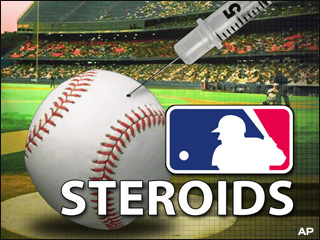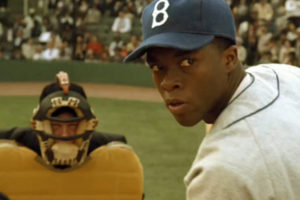The 2012 season marks 10 years since Major League Baseball began testing for performance enhancing drugs, precipitating the end of what has come to be known as the Steroids Era. Fans everywhere nodded in approval while mumbling that it was about time they did something. They then collectively fell asleep as scores started dropping and became frustrated when their kids lost interest in a sport that featured fewer measuring tape homeruns hit by players resembling their favorite super hero action figures.
The steroids issue became a part of the national consciousness in June of 2002 when U.S. Senators John McCain and Byron Dorgan told MLB Commissioner Bud Selig and MLB Players Association executive director Don Fehr that a strict drug testing program needed to be negotiated during the forthcoming collective bargaining. The lack of testing to that point meant that there was little proof of steroid use, but the empirical evidence had mounted to a point that the Federal Government felt they needed to get involved (and we all know the government only gets involved issues when their participation is absolutely paramount). By this point, Major League Baseball was having a harder and harder time explaining the increase in homeruns that had occurred over the past decade and the related records that were being shattered right and left.
Major League Baseball and its Players Association agreed to a testing policy in August of 2002 that was to be slowly rolled out over the next couple seasons. Unsurprisingly, homerun totals began to slowly drop. The MLB hoped they could dodge the public relations bullet with the policy they had created. The first phase of the testing began in March of 2003, which should’ve been plenty of time for any drugs to have worked themselves out of the players’ systems. When testing began, all players on the 40-man rosters of all 30 teams were subjected to the tests. The tests were anonymous, but if a predetermined threshold of positive tests was crossed, testing would increase going forward. Following that season, in November of 2003, MLB announced that 5-to-7 percent of the more than 1,400 players tested were positive for steroids. This crossed the threshold and put into place mandatory testing with resulting punishments for the first time in the history of MLB. (Based on the later testimonies of several players, this percentage still represented a major reduction in steroid use.)
Steroid use in baseball could no longer be denied. The test results provided proof for our suspicions that luck wasn’t responsible for Brady Anderson, who having never hit more than 21 homeruns in a season during his first eight years in the Majors, he suddenly hit 50. Maybe it wasn’t our imagination that Barry Bonds’ head was getting larger. With steroid use public knowledge, it was only a matter of time before a former player would come out of the woodwork with stories and allegations of support this news. Jose Canseco became that former player when in 2005 his book Juiced: Wild Times, Rampant ‘Roids, Smash Hits, and How Baseball Got Big was released. Upon its inception many dismissed the steroid use Canseco alleged as the mudslinging of a disenfranchised attention-hungry former star whose career didn’t play up to the tremendous potential it initially displayed. However, within a couple of years, the landmark investigative work, Game of Shadows was published. The book, authored by San Francisco Chronicle reporters Mark Fainaru-Wada and Lance Williams, chronicled the steroid development and distribution of the Bay Area Laboratory Co-Operative (BALCO). Not unlike Canseco’s work, the book fingered some very recognizable names in professional sports. But unlike Juiced, it carried the credibility of newspaper journalists who spent more than a year investigating the story they uncovered. A number of high profile athletes across several different sports were not only named in the book, but had detailed encounters of the receipt or injection of steroids described based on the testimonies of a number of witnesses and documents the authors gained access to. But the athlete that got the most attention in the book, and the one featured on its cover, was the player who had been the biggest star in baseball during the latter half of the Steroids Era. The man responsible for some of the greatest statistical seasons in baseball history–Barry Bonds–had allegedly accomplished these feats with the aid of performance enhancing drugs (PEDs).
The revelation of his steroid use shocked very few people, but the extent of it did. He instantly became the face of baseball’s Steroid Era. While that statistical evidence suggested he wasn’t the only superstar to have been aided by PEDs, his story was the one that we knew the details of. In the years since Game of Shadows was published, the steroid use of a myriad of other baseball stars has been uncovered. In December of 2007, Senator George Mitchell released his infamous 311-page report which fingered as steroid users dozens of current and former baseball players. The crackdown on steroid use in baseball and the outing of many of the offenders was almost universally applauded in our country. Players were branded as cheaters and asterisks were added to the records they broke in the minds of many fans. Now that nearly ten years have passed since the conclusion of this era was put in motion, emotions have cooled and memories have begun to fade, it seems like a good time to reflect on the end of the Steroids Era. This subject provides an excellent opportunity for reflection on its cultural impact and for discussion on a number of moral and ethical topics it raises. What should be the role of government in regulating steroids in sports? Does the use of PEDs constitute cheating, and if so, should we brand the records with an asterisk or prohibit certain players from the Hall of Fame? I’ll explore these issues and others in tomorrow’s post.





1 Comment
Leave your reply.